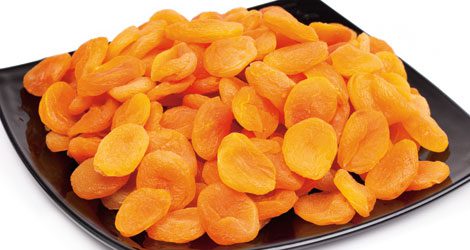Going paleo
An ancestral diet omitting grain, dairy and legumes.

If your choice for pre-race nutrition tends to be linguine or rigatoni, Peter Glassford’s nutritional approach might shock you. The Collingwood, Ont.-based cycling coach and Trek Canada Mountain Bike Race Team member uses an ancestral diet omitting grains, dairy and legumes to fuel himself and his athletes. Extreme or not, Glassford’s diet is working for him. He is the Canadian record holder at the Leadville 100 and the 2012 Ontario provincial crosscountry champion. His approach to nutrition is based on the Paleo diet. It’s something cycling coach Joe Friel often recommends. In The Paleo Diet for Athletes, Friel and co-author Loren Cordain, the original expert on the Paleo diet, explain things simply.
“The essential dietary principles of The Paleo Diet for Athletes are straightforward: you can eat as much lean meat, poultry, seafood, fresh fruit and veggies as you like,” the book says. “Foods that are not part of the modernday Paleolithic fare include cereal grains, dairy products, high-glycemic fruits and vegetables, legumes, alcohol, salty foods, fatty meats, refined sugars, and nearly all processed foods.”
As Glassford explains it, the approach is about maximizing nutrition, which in turn maximizes performance. “The Paleo diet is basically the use of an evolutionary framework to establish an optimal diet and lifestyle for an individual, starting with the most nutrient dense and non-problematic foods. Start thinking about your food in terms of nutrient density,” he says. “What do you get for each calorie?”
Grains, dairy and legumes – which some suggest we’re not fully adapted to – are considered problematic. They’re also less nutrient dense than foods emphasized in the Paleo diet, making them less optimal choices. For example, rather than a pouring a meat sauce over bed of pasta, someone following the Paleo diet might add it to abowl of veggies, such as spaghetti squash or zucchini. According to Nicole Springle, a registered dietitian at the Cleveland Clinic in Toronto, the Paleo diet is growing in popularity. Springle admits, however, that without grains, legumes or dairy, meeting nutrient requirements could be challenging, but not impossible. “You can satisfy dietary requirements without these foods, but it requires careful planning and supplementation,” she says. “Most individuals don’t realize the amount of careful selection of food required to meet their dietary needs.”
Glassford supplements with fish oil and vitamin D to meet his own requirements. You must adjust your eating to match training, just as you would with any nutritionalapproach. “Someone engaging in a road stage race or big training camp, for example, would take in a lot of sweet potato, potato and some fruit,” Glassford says, highlighting the recommended carbohydrate sources for Paleo athletes. While a sedentary person might limit these higher glycemic foods, these are the best Paleo options for replenishing muscle glycogen post-ride. It may be tough for cyclists to say goodbye to the foods they consider essential, but Glassford says passing on the breadbasket is worth it.
“All the athletes I’ve had try the diet at even 50 per cent for 30 days have said they feel the best they have in a long time,” he says. “Skin issues go away; inflammation and pain decreases; energy is great; sleep is good; and performance is the same or better.”
Glassford’s advice is to give the diet a shot. Along the way, if you eat a non-Paleo food, Glassford recommends taking it easy on yourself.
“Thirty days of perfection is great for seeing the full benefits, but just try your best – stay on the wagon,” he says. “Just start. If you see a difference, then maybe it’s time to give it 100 per cent commitment.”
Paleo Snacks For The Ride
While meat, potatoes and veggies for dinner are logical Paleo choices, convenience foods, such as gels, energy bars and sports drinks are usually non-Paleo. Try these mid-ride snacks to stay on track.
Instead of energy gels try fruit. Naturally higher in sugar, fruits such as dried apricots, dates or raisins are quick, transportable whole-food options.
Instead of commercial sports drinks try a homemade brew. Fill your bottle with diluted juice or water mixed with a natural sugar, such as honey or maple syrup, making sure to add a bit of salt to make up for electrolyte losses on long, sweaty rides. Coconut water is a convenient, Paleo-friendly way to rehydrate but can be pricey.
Instead of conventional energy bars, try making your own. Recipes filled with nuts and seeds are simple, freeze well, and give you control over what goes into the mix.
